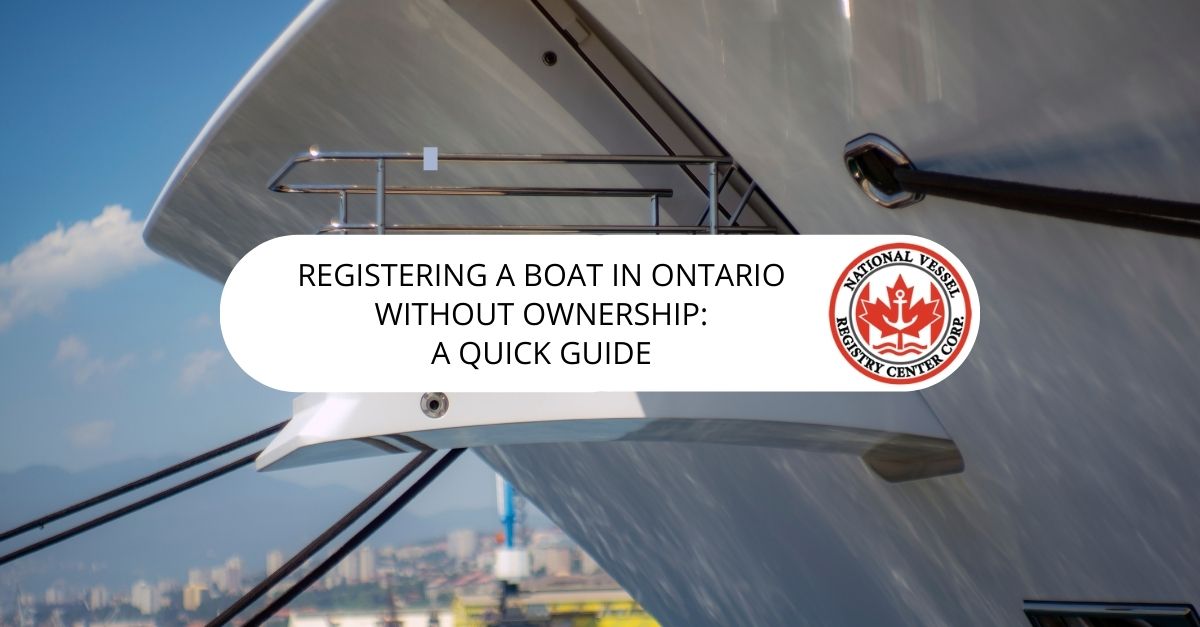Registering a boat in Ontario without ownership can be a challenging process. It is important to have proper ownership documentation when registering a boat to ensure legal ownership and to avoid potential issues. However, if you find yourself in a situation where you do not have the ownership documents, the following 500-word guide outlines the steps you can take to register your boat in Ontario.
- Determine the type of vessel: The first step in registering a boat is to determine the type of vessel you have. In Ontario, the registration process varies depending on whether your boat is a pleasure craft or a commercial vessel. Pleasure craft are primarily used for recreational purposes, while commercial vessels are used for business activities, such as carrying passengers or goods for hire.
- Confirm the registration requirements: In Canada, boats powered by an engine of 10 horsepower (7.5 kW) or more are required to be registered or licensed. Unpowered boats and boats with engines less than 10 horsepower do not need to be registered but can be voluntarily licensed for identification purposes.
- Gather necessary information: To register a boat without ownership, you will need as much information as possible about the boat’s history, including the previous owner(s), any bills of sale, and a detailed description of the boat (make, model, year, color, etc.). This information will be crucial in establishing a chain of ownership and proving your right to register the boat.
- Obtain a written statement: If possible, obtain a written statement from the previous owner(s) stating that they have transferred the ownership of the boat to you. This statement should include the date of the transaction, the purchase price, and the signatures of both parties. If the previous owner is uncooperative or unavailable, a signed affidavit from a knowledgeable third party, such as a marina owner or boat mechanic, may be helpful in verifying your ownership claim.
- Apply for a Hull Serial Number (HIN): If your boat does not have a Hull Serial Number (HIN), you will need to apply for one through Transport Canada. The HIN is a unique identifier that is permanently affixed to the boat and is required for registration. To apply for a HIN, complete the application form available on Transport Canada’s website and submit it along with any supporting documentation.
- Complete a Statutory Declaration: In the absence of proper ownership documentation, you will need to complete a Statutory Declaration in Lieu of Guarantor form. This form is a legal document in which you swear under oath that you are the rightful owner of the boat. The declaration must be signed in the presence of a Commissioner of Oaths, Notary Public, or a lawyer authorized to administer oaths.
- Submit your application: Once you have gathered all the necessary information and completed the required forms, you can submit your application to ServiceOntario, the government agency responsible for boat registration in Ontario. Be prepared to pay any applicable fees for registration and processing.
- Await approval: After submitting your application, you will need to wait for approval from ServiceOntario. The agency may contact you for additional information or documentation if required. Be prepared to provide any additional information promptly to avoid delays in the registration process.
- Obtain your registration and proof of ownership: Once your application has been approved, you will receive your boat registration number and a new proof of ownership document. Display the registration number on your boat as required by law and keep the proof of ownership document in a safe place.
Registering a boat in Ontario without ownership can be a complex process that requires patience and diligence. By following these steps and providing as much information as possible, you can increase your chances of successfully registering your boat and obtaining legal ownership.

“Proud thinker. Tv fanatic. Communicator. Evil student. Food junkie. Passionate coffee geek. Award-winning alcohol advocate.”

